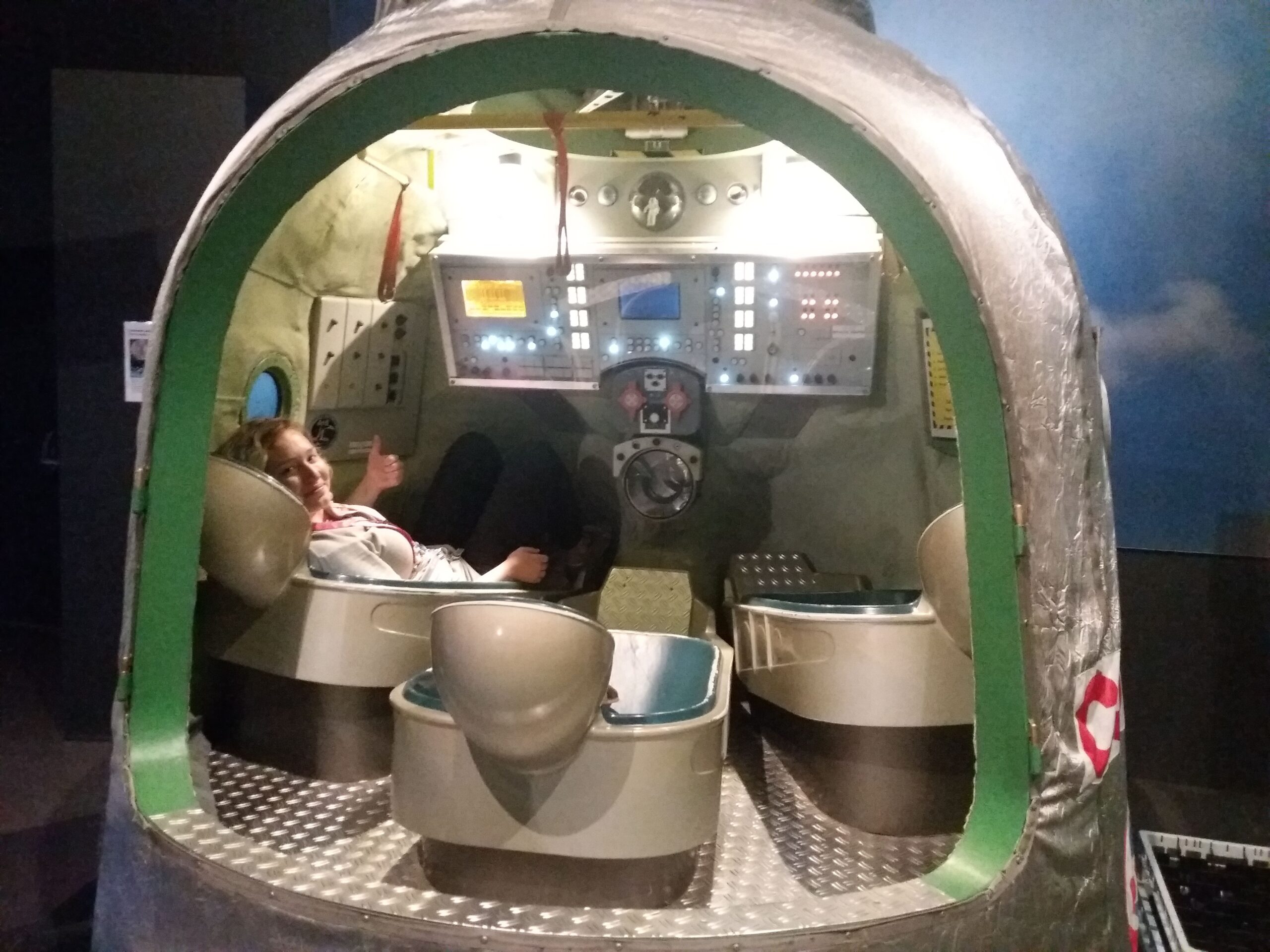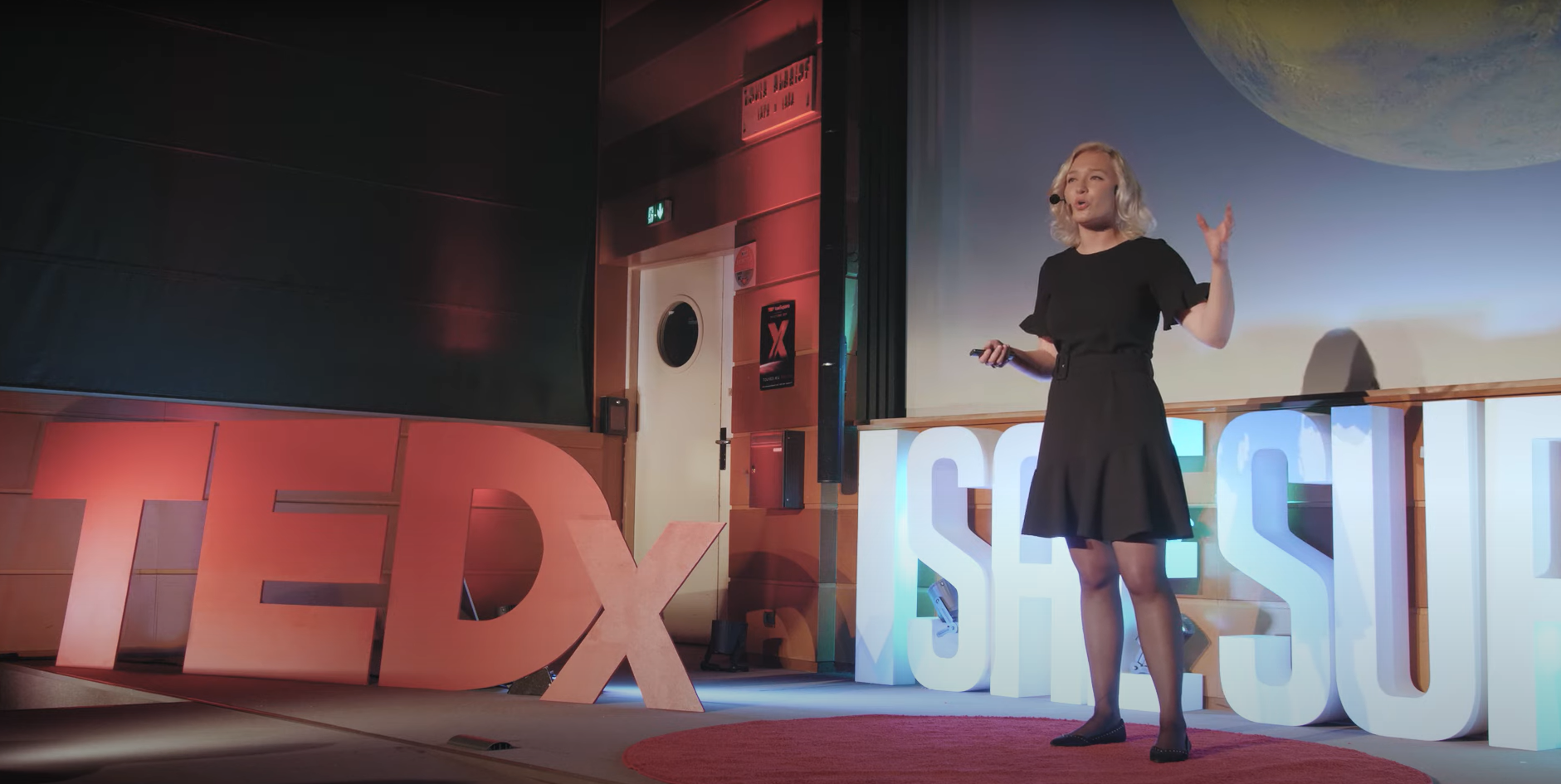“I want to bring people to those stars”, said a young Yulia Akisheva, as she stared at the night sky. Aerospace Engineering, she found, was just the right career path to do so. After pursuing her bachelor’s in Vehicle Engineering from KTH in Stockholm, Sweden, she did a double degree in Aerospace Engineering with a specialisation in Aerospace Structures and Materials in addition to Design and Operation of Space Systems. This degree is a collaboration between KTH in Sweden and ISAE-SUPAERO, one of the world’s top universities for Aerospace Engineering. She has a third master’s degree from ISAE-SUPAERO in the Sciences of the Mechanics of Materials and Structures. She has also worked on the ExoMars 2020 mission in partnership with the European Space Agency and ROSCOSMOS. Today, Yulia is on a mission to make human spaceflight to Mars and the Moon safer through her PhD project, PURPLE. Read on to learn more about how she is pursuing her dream career.
When did you decide on Aerospace as your career choice?
I’m originally from East Russia but moved to Sweden when I was young. My childhood definitely had an impact on my career. I was almost always outdoors with friends in the yard of our apartment complex. I remember sitting in a rocket-shaped installation there, pretending I’m flying in space.
Although I was really interested in Aerospace, I was initially hesitant to choose a different career path, because my mother is a businesswoman and she has always been my role model. I spoke to my high school career counsellor for guidance, and the conversation truly was a turning point in my life. She convinced me to pursue what I actually dreamt of doing instead of just following in the footsteps of my family. I ended up considering Aerospace more seriously and applied exclusively for that degree– nothing else. I went all in, and it truly paid off.
How did your Bachelor’s degree prepare you for a Masters’s degree in Aerospace?
A course in Vehicle Engineering prepares you at the bachelor’s level to pursue something like Aerospace at the Master’s level. My bachelor thesis was on the analysis of the radiation dose exposed to a KTH student-built 3U CubeSat MIST, for which I was under the supervision of physicist and astronaut, Christer Fuglesang. The course also involved a lot of math, which equipped me for what was to come ahead as an engineer. We studied a little bit of everything. Although I had decided on my niche already, it was very interesting to get a broad overview of different types of vehicles and the engineering behind them.
What was your experience like as a double-degree Master’s student?
After completing my bachelor’s, I was off to France for my Master’s degree. During the first year, I mostly studied general modules, like Aerospace structures and materials, physics and advanced math. In the second year, I was able to choose my specialisation. I also completed 2 internships during this time, which made me realise my interest in research. So, I simultaneously pursued a third research-based Master’s degree by attending additional classes in the evening, which enhanced my research skills.
During the course of my degree, I had to adapt to different languages and cultures. My mother tongue is Russian, and I started learning English at a very young age. But coming to France, I had to learn French. I took as many courses as possible to learn the language, which eventually became a fun activity. I really appreciate the opportunity the course gave me to fully immerse myself in a culture I didn’t know much about.

How did your internships influence your journey?
I did a few internships during my Master’s degree. I was particularly interested in the human exploration of Mars. I wanted to work on getting people to Mars and making sure they’re able to stay there safely. One of the ways to get to Mars is to establish a long-term sustainable human presence on the moon. While there, people need to protect themselves from radiation. These themes became my interests for internships. So, I got involved in the Mars project at the European Space Agency (ESA) as well as the Space Research Institute of the Russian Academy of Sciences in Moscow. The project at ESA involved a preliminary study of a mutual atmospheric radio occultation experiment between two satellites namely the Trace Gas Orbiter (TGO) of the ExoMars mission and the Mars Express (MEX) of the ESA. The work included a Matlab simulation of the ray propagated between the two satellites and through the atmosphere of Mars, based on the TGO and MEX’s trajectories obtained from SPICE kernels. For the thesis of my research Master’s as well, I looked into the idea of protecting humans and habitats from radiation on the moon or Mars using in-situ resources, such as regolith.
My internships were really beneficial for me because I learned so much, got to attend conferences and shared my work. I would really recommend that people in this field attend such international or national conferences. Not only does this allow you to present your work, but also provides a great networking opportunity. In fact, I got in touch with some of my current PhD thesis supervisors through such a conference.
I think projects and internships are very essential, as they’ll help you understand what you may want to do in the future with your career. Being as hands-on as possible, whether by building things or by trying out different roles in a project, all significantly improve your skills as an engineer and provide greater clarity about what field is best for you.

How did these experiences lead you to your PhD? What does your PURPLE project entail?
As my research master was wrapping up, I realised I wanted to pursue a PhD in the same field. However, a PhD degree in France is 3 years long, and I wanted to get out there and try something different before committing to such a long research journey. So, after I finished my studies, I worked as a Consultant on aeronautical projects at Alten for a year, which gave me some industry experience. I highly recommend getting as much experience as possible in different arenas of the field, as it really improves your prospects.
Alongside, I was knocking around doors in academia and the industry to meet people and organisations who’d be willing to fund my PhD project. When I finally found someone who truly believed that my project was worth investing in, it was a very proud moment for me. I am grateful to the European Space Agency, TRAD Tests & Radiations, and ISAE-SUPAERO who are supporting my PhD project today.
My PhD project is called PURPLE, which is Protective Use of Regolith for Planetary and Lunar Exploration. The research seeks to find out how regolith can be used to bring down the effects of exposure to radiation during long-term missions to the Moon and Mars. Currently, I’m running simulations of the project and also planning to conduct tests with some radioactive materials and regolith simulants. I’m also looking for other materials that we could use to optimise habitat construction and reduce the effects of radiation as much as possible.

What was a challenging part of your journey?
Dealing with uncertainty has always been a challenge for me. Initially, despite being really dedicated to the field of Aerospace, I knew that one of my two nationalities would make it harder to pursue certain niches in the field. This created some uncertainty about my Master’s specialisation. Similarly now, in my PhD project, there is uncertainty, mainly because I can never be sure about whether the direction I’m going in is the right path. The ability to explore and find something new within your field is liberating, it is hard not having reassurance about your approach during research. I find this anticipation of not knowing where you’re heading, quite challenging.

What was the proudest moment during your journey?
I am proud to be one of the first few members of an initiative called Our Giant Leap. Women face more hardships in this field, whether in the form of being passed up for an opportunity or unable to interact with colleagues because they’re the only woman in the room. We felt the need to do something about this, and so we started the initiative dedicated to gender equality in the field of Aerospace. We put forward projects, ideas and recommendations about how to foster diversity and gender equality in Aerospace. In 2021, the initiative became the Diversity and Gender Equality Project Group, a project group of the Space Generation Advisory Council. I was really proud of this achievement, as becoming a project group with the SGAC meant that we were now in an important position at an international organisation.
Pursue what you love– it’s the simplest yet best advice. Keep in mind, that just because you love what you do doesn’t make it easy. There will be hurdles and challenges along the way, but it is extremely rewarding to craft something you’re passionate about. Do what your heart calls out to. Stay honest about what you want and pursue it to the maximum